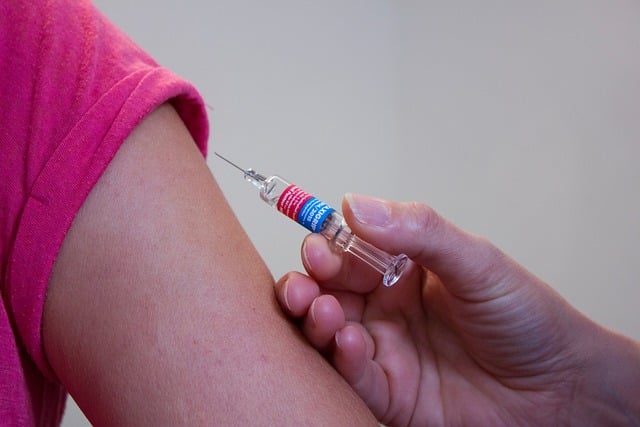A groundbreaking clinical trial conducted by researchers at Emory University has revealed that a twice-yearly injection could revolutionize HIV prevention, providing 96% greater protection than the current standard of care. This study marks a significant advancement in expanding access to HIV prevention in communities most impacted by the virus.
Published in New England Journal of Medicine | Estimated reading time: 5 minutes
In a comprehensive Phase 3 clinical trial conducted across multiple countries, Lenacapavir, administered as an injection every 26 weeks, significantly reduced HIV infection rates compared to daily oral medications. With 3,265 participants across 88 global sites, the study demonstrated impressive results: only two participants in the Lenacapavir group contracted HIV, compared to nine in the control group receiving daily oral medication.
The double-blind, randomized trial, funded by Gilead Sciences, allocated participants in a 2:1 ratio to receive either subcutaneous Lenacapavir every 26 weeks or daily oral emtricitabine-tenofovir disoproxil fumarate (F/TDF). The outcomes were striking: the Lenacapavir group had an HIV infection rate of just 0.10 per 100 person-years, in contrast to 0.93 per 100 person-years in the F/TDF group. This effectiveness becomes even more apparent when compared to the background HIV incidence rate of 2.37 per 100 person-years in the screened population.
Dr. Colleen Kelley, the lead author and professor at Emory University’s School of Medicine, highlights the profound impact of these findings on medical advancements. The nearly 100% efficacy rate is especially significant for individuals struggling with daily oral medication regimens. As the co-director of the Emory Center for AIDS Research and Associate Dean for Research for Emory at Grady, Dr. Kelley’s insights carry considerable weight in the field.
This study directly addresses a key challenge in HIV prevention: medication adherence. Existing prevention methods require daily oral medication, which can be challenging to consistently maintain. Research indicates that approximately half of individuals starting daily oral PrEP discontinue within a year due to various factors, including barriers to healthcare access. Introducing a twice-yearly injectable option could significantly enhance adherence rates and, consequently, improve prevention efficacy.
The trial’s emphasis on diversity and inclusion was noteworthy. Dr. Valeria Cantos, an associate professor at Emory University’s School of Medicine and principal investigator at the Grady research site, emphasized their dedication to representing underserved populations. The study included participants from various countries, with materials provided in multiple languages and bilingual staff at different sites. This inclusive approach was essential, as populations disproportionately affected by HIV often encounter limited access to PrEP.
Recent data underscores the importance of these findings. In 2022, more than half of new HIV infections in the United States occurred among cisgender gay men, with 70% affecting Black or Hispanic individuals. The development of a twice-yearly injectable option could help address these disparities by removing daily adherence obstacles and reducing the frequency of healthcare visits to twice a year from every three months.
The safety profile of Lenacapavir during the trial was promising. While some participants experienced injection-site reactions, leading to discontinuation in 1.2% of the Lenacapavir group compared to 0.3% in the F/TDF group, no major safety concerns were identified. Dr. Carlos del Rio, chair of the Department of Medicine at Emory University School of Medicine, stresses the importance of ensuring equitable access to these new prevention tools, despite the promising results.
As the Phase III clinical trial concludes and awaits FDA approval, researchers are hopeful for potential authorization by 2025. This milestone could signify a significant breakthrough in HIV prevention efforts, particularly for communities at high risk of infection.
Glossary
- PrEP (Pre-exposure prophylaxis): Medication taken to prevent HIV infection before exposure to the virus
- Lenacapavir: A long-acting injectable medication administered twice yearly for HIV prevention
- Phase 3 Clinical Trial: Large-scale testing of a medical treatment’s effectiveness and safety in human subjects
Test Your Knowledge
How often must Lenacapavir be administered for HIV prevention?
Lenacapavir is administered every 26 weeks (twice yearly) via subcutaneous injection.
What percentage of participants in the Lenacapavir group remained HIV-negative during the trial?
99% of participants in the Lenacapavir group did not acquire an HIV infection during the trial.
How does the efficacy of Lenacapavir compare to the background HIV incidence in the screened population?
The incidence rate ratio was 0.04 (95% CI, 0.01 to 0.18), representing a 96% reduction in HIV infection risk compared to the background incidence.
What were the comparative infection rates between the Lenacapavir and F/TDF groups in terms of infections per 100 person-years?
The Lenacapavir group had 0.10 infections per 100 person-years compared to 0.93 per 100 person-years in the F/TDF group.
Enjoy this story? Subscribe to our newsletter at scienceblog.substack.com.




